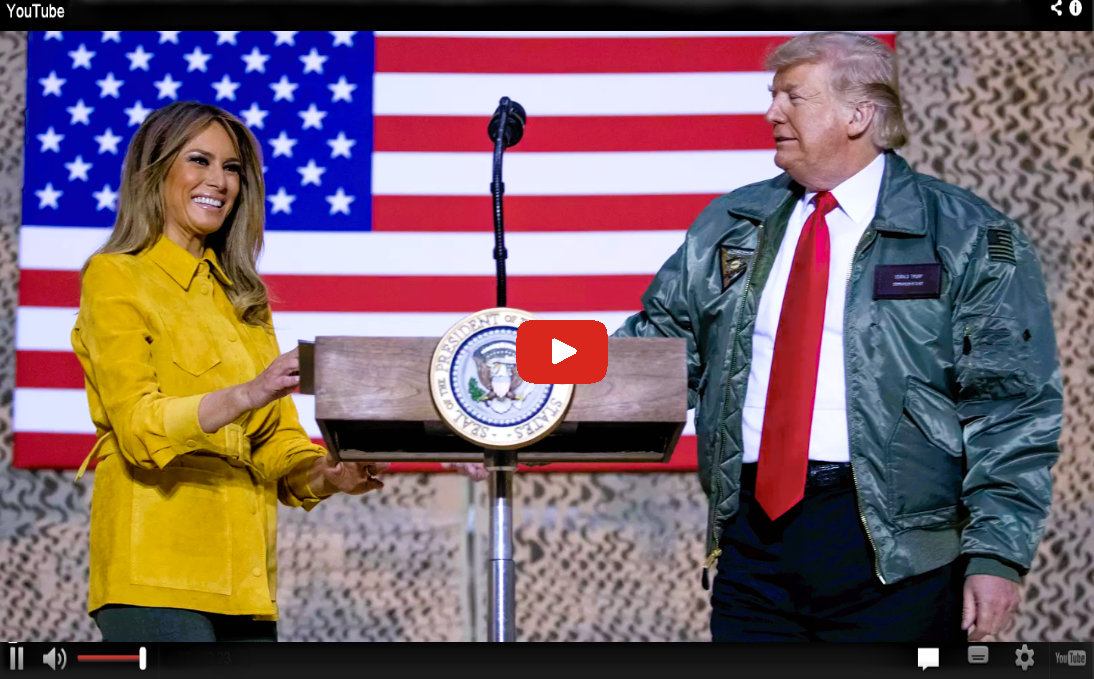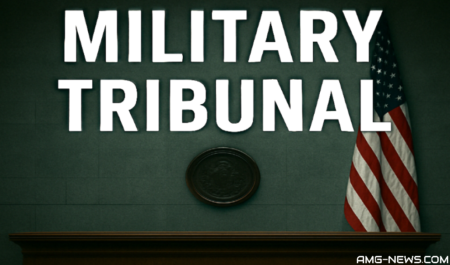Behind the Throne! The Power Dynamics of the Commander-in-Chief: A Closer Look at DJT’s Presidency and The Military Chain of Command
Medeea Greere, an independent publisher, is now on Telegram at https://t.me/AMGNEWS2022 and exists only on reader support as we publish Truth, Freedom and Love for public awareness. Thank You for your support!
In the realm of American politics, few roles carry as much weight and influence as that of the President of the United States. However, it’s essential to understand that a President’s authority is not unlimited and exists within a complex web of checks and balances. In this article, we delve deep into the dynamics of presidential authority, the Commander-in-Chief’s role, and the actions taken during Donald J. Trump’s tenure as President. From military budgets to executive orders, this examination aims to provide a comprehensive understanding of the powers vested in the highest office in the land.
Presidents Only Have Authority During Their Presidency – A Fundamental Truth
The presidency of the United States is one of the most powerful positions in the world, but it’s important to recognize that presidential authority is not perpetual. A President’s influence is confined to their term in office, typically four years. During this time, they wield significant power, but it is not without limits. Let’s begin by exploring the authority of the President and the role of the Commander-in-Chief.
Commander-in-Chief Only Has Authority While President – Unpacking the Role
The President of the United States also holds the title of Commander-in-Chief of the Armed Forces. This role is crucial for national defense and military operations. However, it’s vital to remember that the Commander-in-Chief’s authority is tied to their status as President. When their term ends, so does their command over the military. But what exactly does this mean for the armed forces, and how does it affect the decisions made during a presidency?
All Generals Will Always Listen to Their Commander-in-Chief – The Chain of Command
One of the cornerstones of military discipline and effectiveness is the chain of command. In the United States, the President serves as the ultimate authority in this chain as the Commander-in-Chief. This means that all Generals, regardless of their rank or experience, are bound to follow the orders of the President during their time in office. It’s a critical element of civilian control over the military and ensures that the armed forces remain under the guidance of elected leadership.

All Soldiers Will Always Obey the Orders of the President and Officers Appointed Over Them – Military Obedience
Beyond Generals, this principle extends to all members of the military. Soldiers, from privates to officers, are duty-bound to follow orders from their superiors, including the President. The hierarchy of command ensures that orders are transmitted effectively and executed without question. This foundation of discipline and obedience is essential for the functioning of any military force.
Now, let’s turn our attention to the Trump presidency and dissect some key events and actions that took place during his time in office.
DJT’s $770 Billion Defense Budget – A Historic Raise for Soldiers
During his presidency, Donald J. Trump made headlines with a defense budget of $770 billion. This budget allocation included what was hailed as the most substantial raise for soldiers in history. This move underscored his commitment to supporting the men and women in uniform, reflecting his approach to strengthening national defense.
The Backing of 200 Generals – A Remarkable Show of Support
In 2016, then-candidate Donald Trump claimed to have the backing of 200 Generals, with more expressing their support in the future. To put this in perspective, it’s worth noting that only 14 Generals commanded during World War II, highlighting the scale of this endorsement. This significant support from the military community raised questions about his potential approach to military matters once in office.
The Military Justice Act – Separation of Military and Civil Courts
The Military Justice Act was already in place before Trump’s presidency, but it played a pivotal role in delineating the boundaries between the military and civil courts and the roles of the President and Commander-in-Chief. This act reinforced the principle of civilian control over the military, ensuring that military justice remained separate from civil laws and courts.
Federal Continuity Directives – Preparedness in the First Six Months
Within the first six months of his presidency, Donald Trump initiated Federal Continuity Directives. These directives aimed to ensure the continuity of federal government operations in the event of a crisis or emergency. This proactive approach demonstrated a commitment to preparedness and stability.
Keeping Guantanamo Bay Open – Executive Order 13823
One of the most notable actions taken by President Trump was the revocation of President Obama’s executive order to shut down Guantanamo Bay. Instead, he issued his own Executive Order 13823, which is still in effect today. This decision reflected Trump’s stance on national security and his intention to detain individuals he referred to as “bad dudes.”
Amendment and Extension of the Defense Production Act
On March 2, 2020, President Trump amended and extended the Defense Production Act (DPA) to September 30, 2025. This move ensured that all necessary funds were appropriated and set aside for the invocation of the DPA. It was a strategic step to strengthen national defense capabilities and preparedness.
Federalization of Troops – The President’s Authority
One of the most significant powers held exclusively by the President is the ability to federalize troops, transitioning them from their state, reserve, or guard status to active duty. President Trump exercised this authority by federalizing the Reserves to Active-Duty during his term. These orders remain active and unresolved, contributing to the National Guard’s status outside of their state on a daily basis.

Everything DJT Said: A Matter of Fact
Throughout his presidency, Donald Trump was known for his direct and often unconventional communication style. But when it came to his statements and promises, they had a remarkable track record of becoming reality. The question arises: if he had such authority and support, what did he do with it?
The Confused Left and Radical Civilians – Perception vs. Reality
In the eyes of many, especially those on the left, Donald Trump’s actions often appeared erratic or even authoritarian. Some even labeled him a “wannabe dictator.” But let’s take a step back and examine the facts: were these perceptions based on reality, or was there a deeper narrative at play?
Foreign Aircraft in Our Nation – A Puzzle Unveiled
During Trump’s presidency, questions arose about the presence of foreign aircraft in American airspace without any apparent retaliation or response. Many wondered if there were covert actions taking place, individuals going missing, or other mysterious events occurring under the radar.
“Biden” in Control – The Missing Orders
The transition of power from one President to another is a crucial aspect of American democracy. However, concerns emerged during the early days of the Biden administration regarding the absence of clear orders and directives. Where were the executive orders and actions that typically accompany a new presidency?
The Foundation of Order – 50 USC §1550
To understand the dynamics at play, it’s essential to examine the legal framework that governs presidential authority and military actions. In this context, 50 USC §1550, also known as the War Powers Resolution Act, takes center stage. This statute outlines the process by which a President and Congress can declare war. But how does it relate to the events unfolding during Trump’s presidency?
A Declaration from December 20, 2019 – An Acting CIC
On December 20, 2019, a significant declaration was made, setting the stage for the exercise of presidential authority. This declaration transformed the President into an Acting Commander-in-Chief, with implications for military actions and operations. The 180-day clause within this declaration played a critical role in federalizing troops to active-duty status.
The Unresolved Declaration – Lingering Questions
As of the time of writing, the declaration from December 20, 2019, remains unresolved. Its implications for the exercise of presidential authority and military actions continue to cast a shadow over the political landscape. What does this mean for the role of the President and the actions taken during Trump’s tenure?
The Trump Presidency – A Dictatorship or a Strategic Approach?
Some critics have labeled the Trump presidency as a dictatorship in the making, citing his substantial authority and the support of 200 Generals. But let’s take a closer look:
- How many wars did Trump start during his time in office?
- What was the state of the economy under his leadership?
- Did he follow the trend of past Presidents who initiated conflicts to bolster the economy?

The Complexity of Presidential Authority
In the intricate world of American politics and the presidency, the exercise of authority is far from straightforward. It involves a delicate balance of power, legal frameworks, and checks and balances. As we dissected the actions and decisions of Donald J. Trump during his presidency, it becomes clear that the reality is often more nuanced than initial perceptions suggest. Understanding the complexities of presidential authority and the role of the Commander-in-Chief is essential for a comprehensive grasp of American governance.
In the grand tapestry of history, each presidency leaves a unique mark, and the Trump administration was no exception. It’s through critical analysis and a deep dive into the facts that we can shed light on the true dynamics at play during this pivotal period in American politics.
Red October Intel: Donald Trump Has a ‘Big, Strong Message’ – The U.S. is Getting Ready to go Military Tribulations – Major Gen Paul Eaton Have Warned of Civil War in 2024
In the midst of rising tension and political chaos, the United States finds itself teetering on the brink of an unprecedented crisis. Former President Donald Trump has emerged as a prominent figure, issuing a powerful message that has sent shockwaves through the nation. Major General Paul Eaton, a respected military figure, has sounded the alarm, warning of a potential civil war in 2024.
The deep state’s influence looms large, casting a dark shadow over the nation’s future. In this article, we delve deep into the tumultuous Red October Intel, examining the implications, causes, and potential outcomes of this critical juncture in American history.
Read the full article HERE: https://amg-news.com/red-october-intel-donald-trump-has-a-big-strong-message-the-u-s-is-getting-ready-to-go-military-tribulations-major-gen-paul-eaton-have-warned-of-civil-war-in-2024/
ALSO: The Pentagon’s Clandestine Military Tribunal Within Guantánamo Bay – https://amg-news.com/the-pentagons-clandestine-military-tribunal-within-guantanamo-bay/
ALSO: OPERATION TROJAN HORSE: The Most Destructive and Naked Act of Treason in U.S. History…. https://amg-news.com/operation-trojan-horse-the-most-destructive-and-naked-act-of-treason-in-u-s-history/




![BREAKING MILITARY RED ALERT: TRUMP COMMANDS SILENT EVACUATIONS AS WAR SIGNALS IGNITE IN THE GULF. NO PENTAGON ORDERS. NO MEDIA WARNINGS. SOMETHING IS BREWING — AND IT STARTS AT THE TOP. [VIDEO]](https://amg-news.com/wp-content/uploads/2025/06/TRUMP-COMMANDS-SILENT-EVACUATIONS-AS-WAR-SIGNALS-IGNITE-IN-THE-GULF-450x265.png)


![BREAKING: JIHAD CALL ISSUED ON U.S. SOIL – AL-QAEDA CHIEF ORDERS AMERICAN MUSLIMS TO ASSASSINATE TRUMP, VP J.D. VANCE, ELON MUSK [VIDEO]](https://amg-news.com/wp-content/uploads/2025/06/JIHAD-CALL-ISSUED-ON-U.S.-SOIL-450x237.png)

![FALSE FLAGS & INSURRECTIONS: TRAITORS IN THE STREETS – 200 DEMOCRAT-BACKED NGOs LAUNCH COORDINATED ATTACK ON THE U.S. ARMY’S 250TH ANNIVERSARY [VIDEO]](https://amg-news.com/wp-content/uploads/2025/06/200-DEMOCRAT-BACKED-NGOs-LAUNCH-COORDINATED-ATTACK-ON-THE-U.S.-ARMY-450x233.png)
